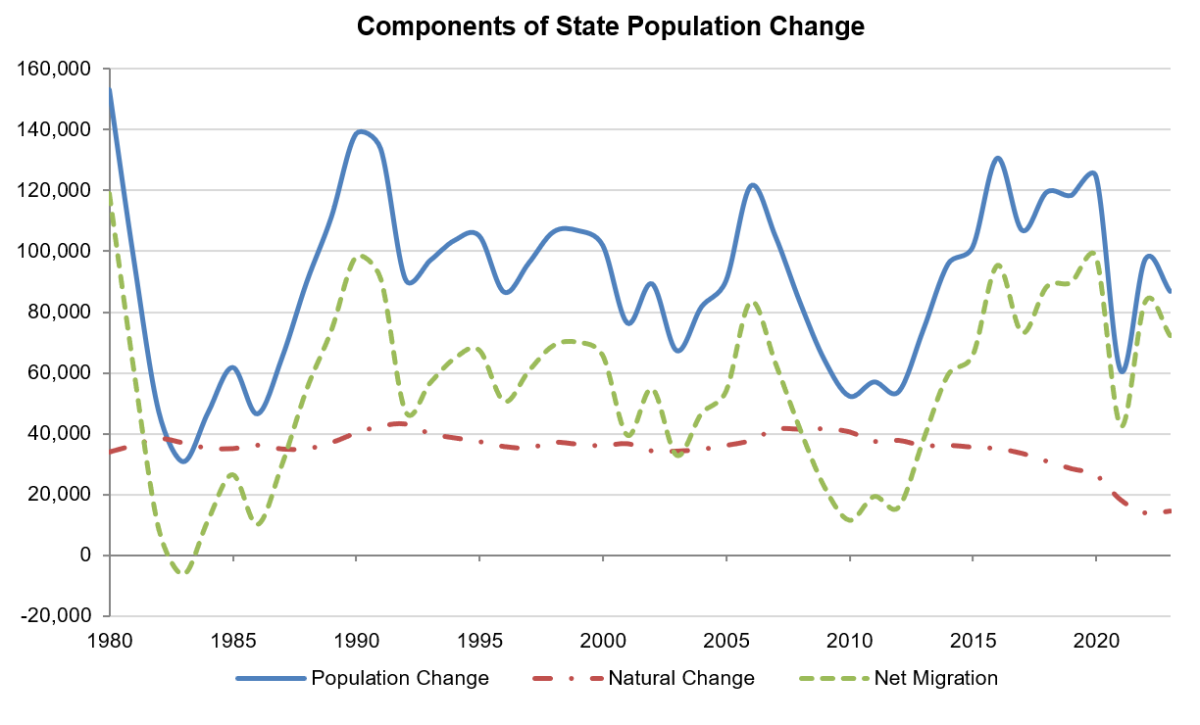Washington tops 7.9 million residents in 2023
OLYMPIA, Wash. – Washington’s total population grew by an estimated 86,750 — to 7,951,150 as of April 1, 2023, according to annual estimates that the Office of Financial Management prepared.
The unadjusted population growth rate over the last year was 1.1%, somewhat slower than the previous year, when the state’s population grew by 1.3%.
Washington’s population has grown by 244,840 people since the 2020 decennial census on April 1, 2020. The 86,750 increase is below the average annual increase from the last decade (98,200).
King County remains the main contributor to the state’s overall population growth, adding 30,100 people this year, compared to an average of 33,800 people per year between 2010 and 2020.
Migration continues to be the primary driver behind Washington’s population growth. From 2022 to 2023, net migration (people moving in minus people moving out) totaled 72,300, down by 11,300 from last year. Net migration accounted for 83% of the state’s population growth. Natural change (births minus deaths) was responsible for the other 17%. Natural change (14,445) remains low but has recovered somewhat from the increased deaths and lower births during the COVID-19 pandemic. Deaths will increase as baby boomers age, and birth rates from millennial and post-millennial parents should continue to be lower than previous generations.
Housing growth is a significant reason Washington saw population growth this year, evident in high occupancy rates in most cities in 2023. Over the past year, the state added 46,300 housing units, 300 less than the previous year. Of all new units built this past year, 63% were multi-family units. More than 72% of all new housing units the past two years were built in one of the state’s five largest metropolitan counties. King County led all counties with 18,800 new housing units and saw 40% of the state’s total housing growth over the last year. With strong housing growth this year in the face of slowing population growth, housing is slowly catching up with population.
Consistent with previous years, over 71% of state population growth occurred in the five largest metropolitan counties — Clark, King, Pierce, Snohomish, and Spokane. The nine counties with populations between 100,000 and 350,000 saw 21% of the state’s growth. Counties with less than 100,000 had an 8% share, smaller than the previous year. Whatcom (1.8%), Benton (1.5%), and Snohomish (1.5%) were the three fastest growing counties.
The April 1, 2023, population estimate for Washington’s incorporated cities and towns is 5,222,265, an increase of 1.3% from the previous year. The top 10 cities for numeric change, in descending order, are Seattle, Kirkland, Redmond, Bellingham, Lynnwood, Vancouver, Spokane, Mountlake Terrace, Tacoma, and Ridgefield. Seattle’s population increased by 16,700 people, for a total of 779,200. Strong housing growth was the main driver of population growth for these cities.



